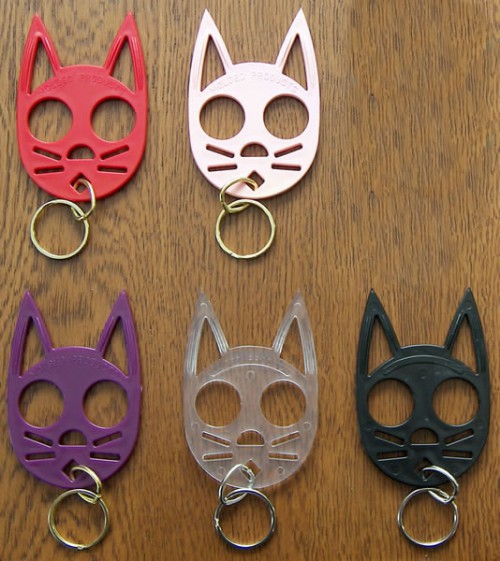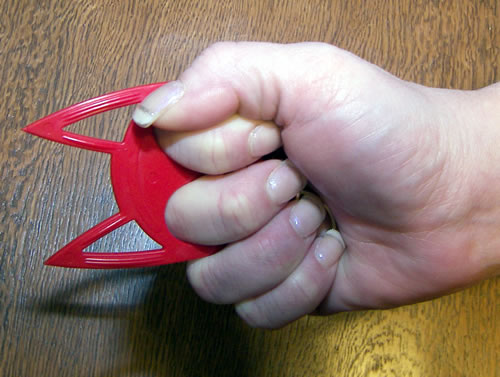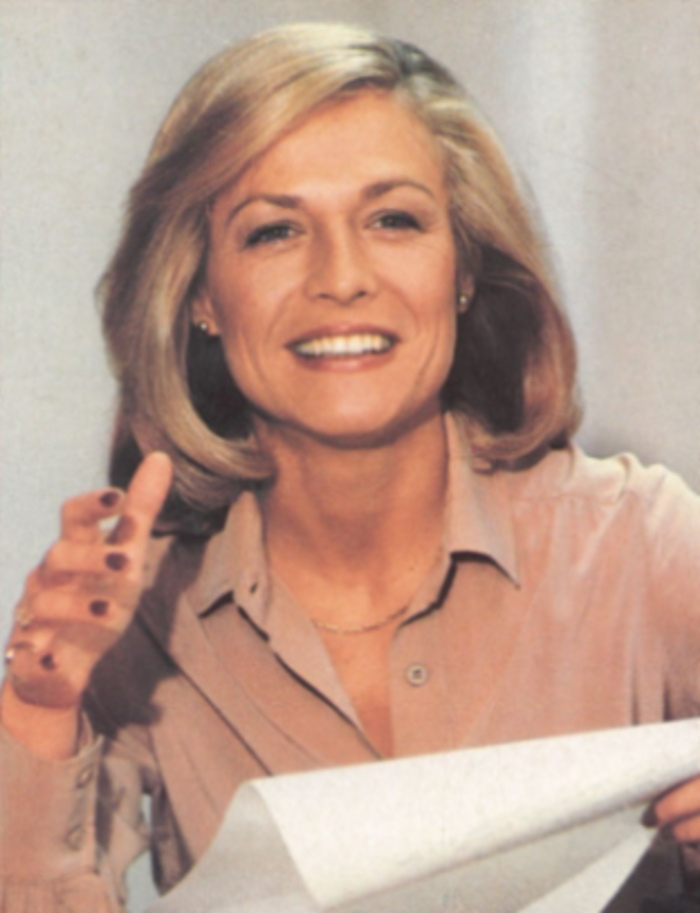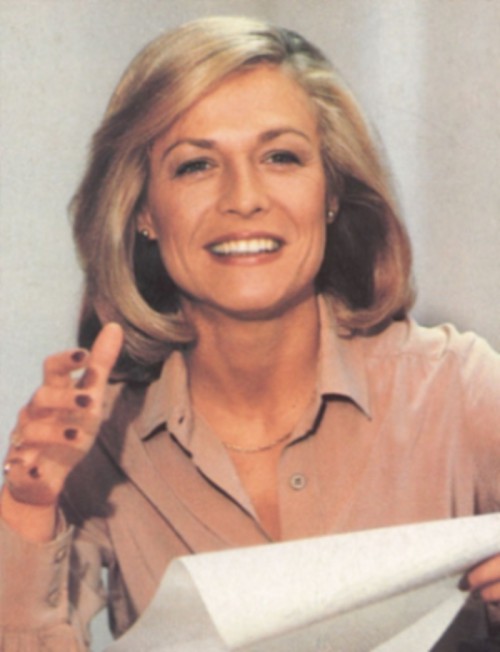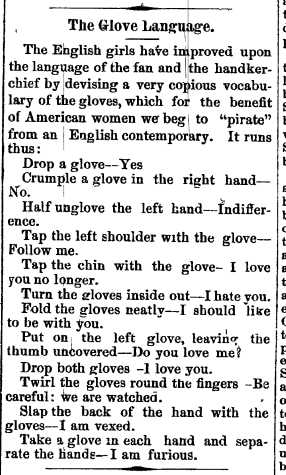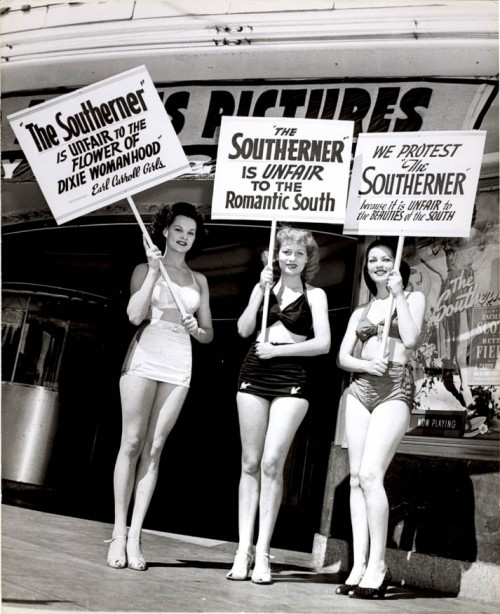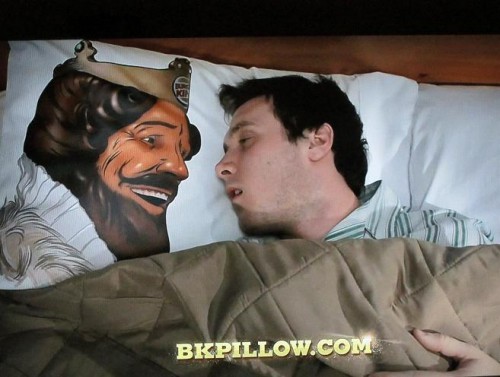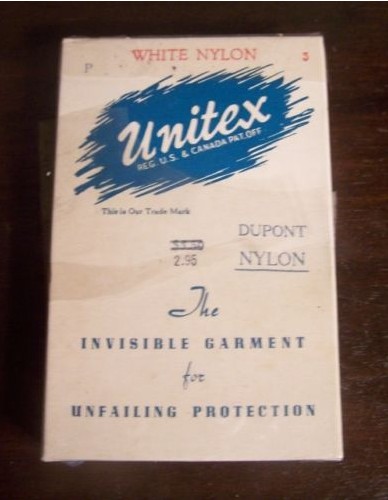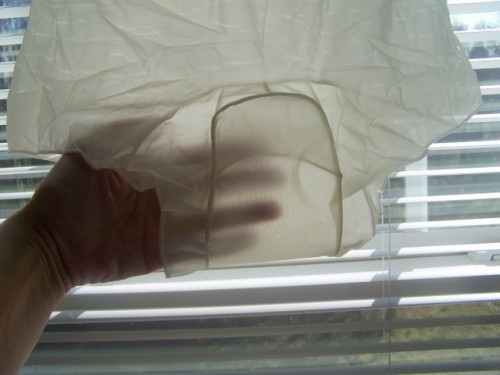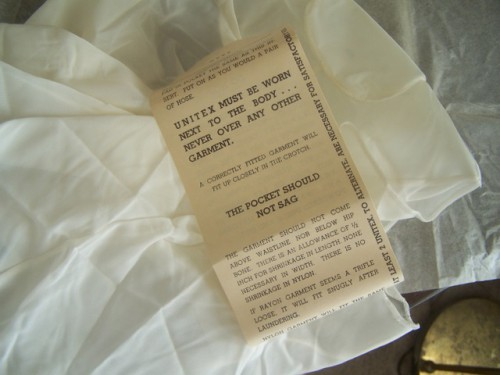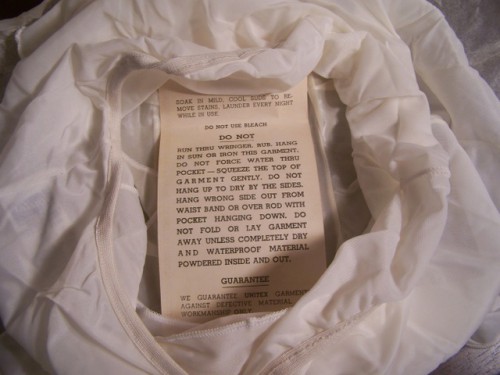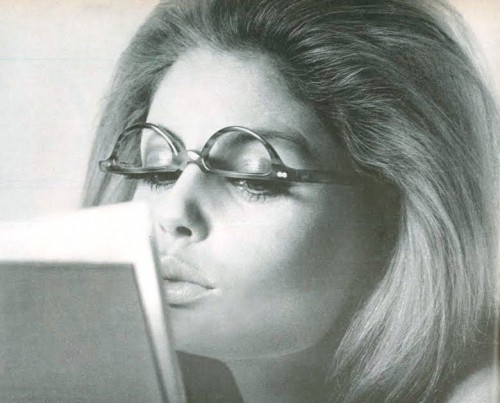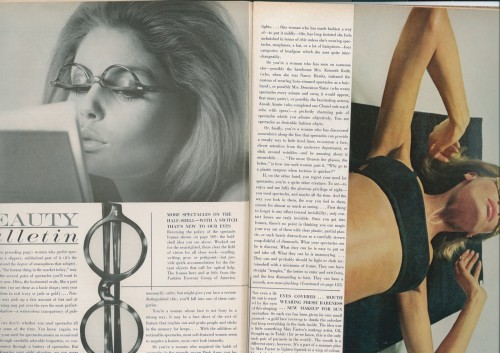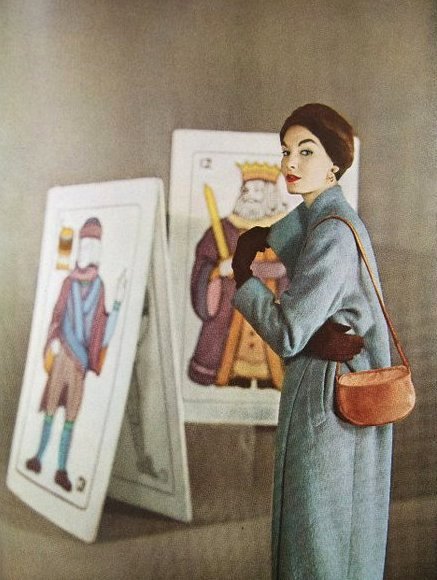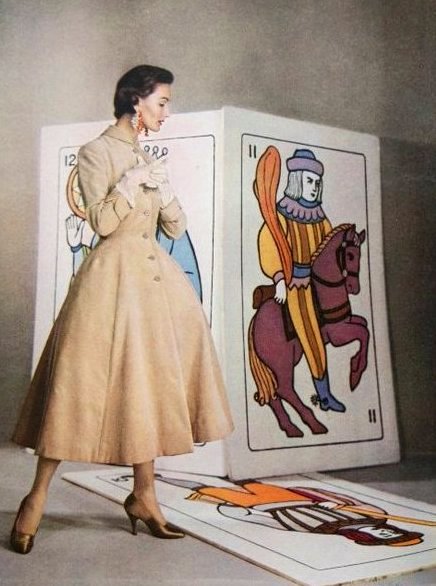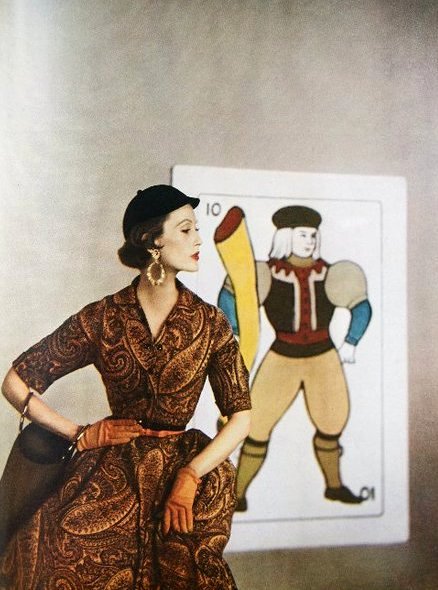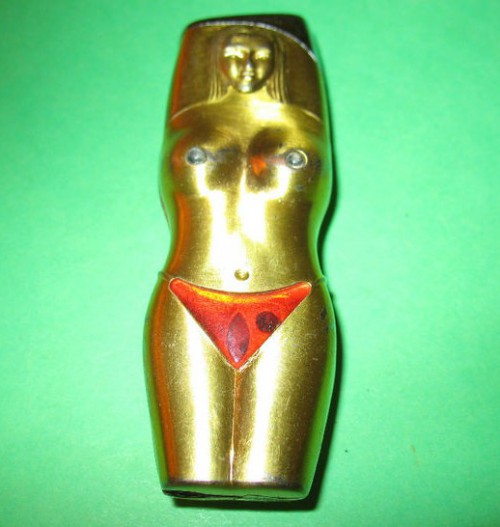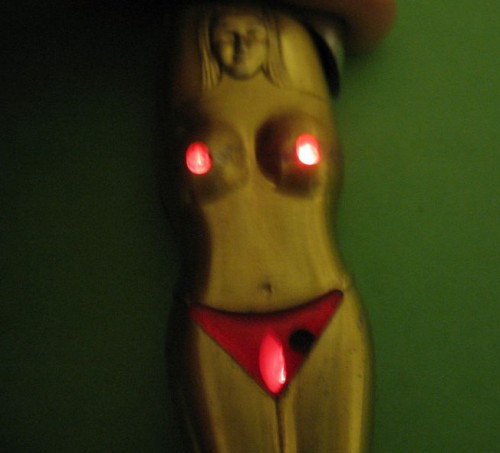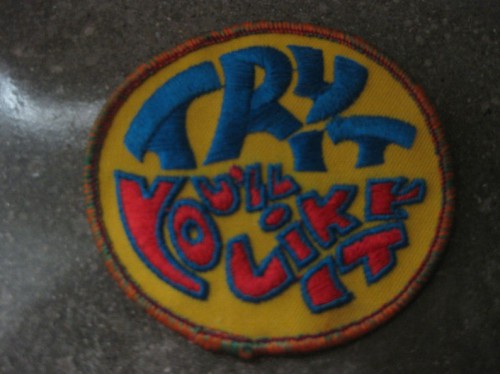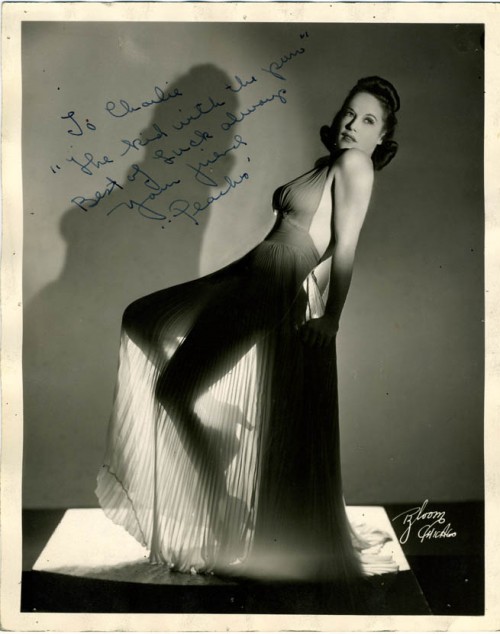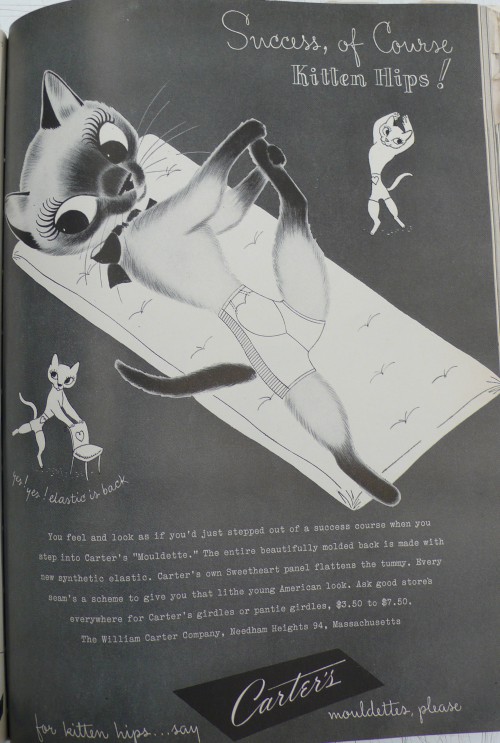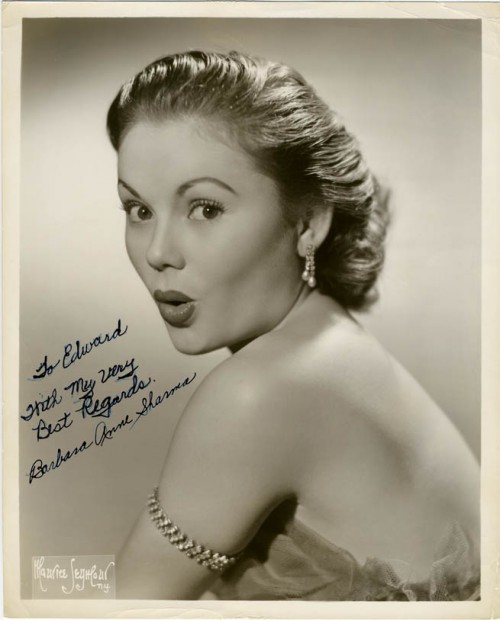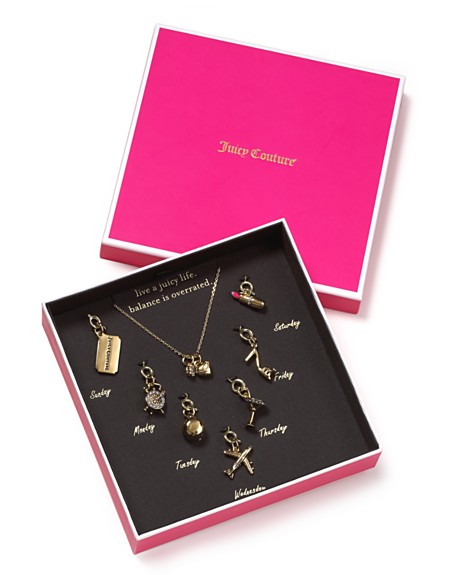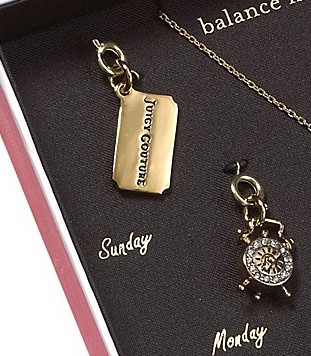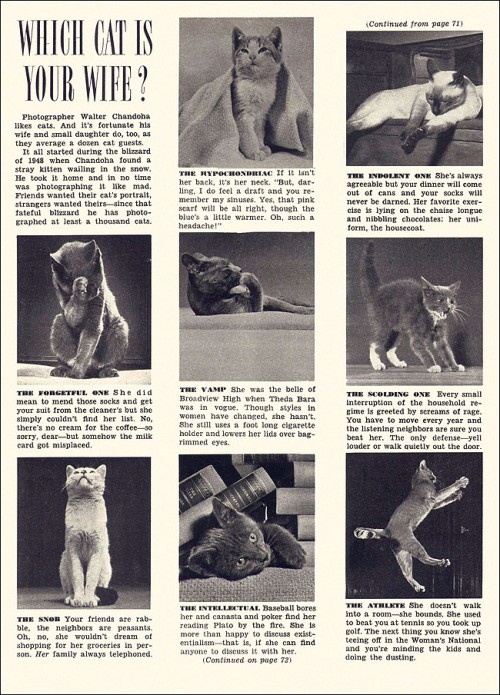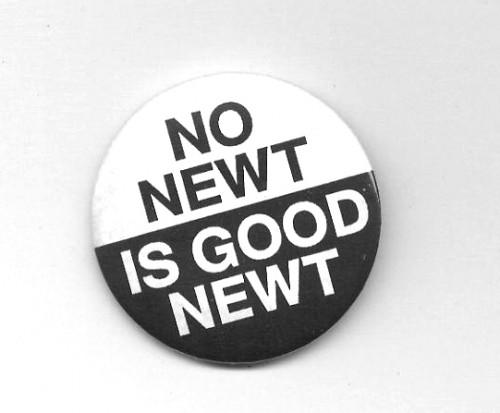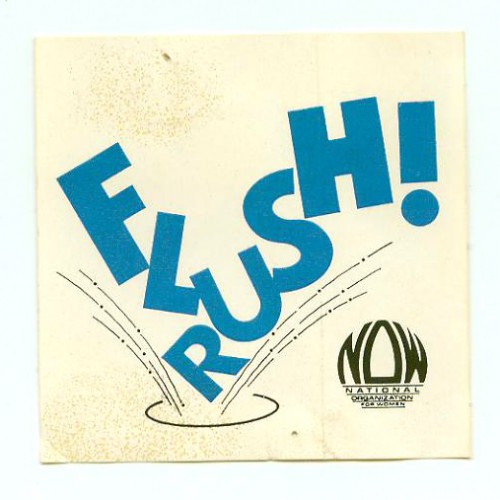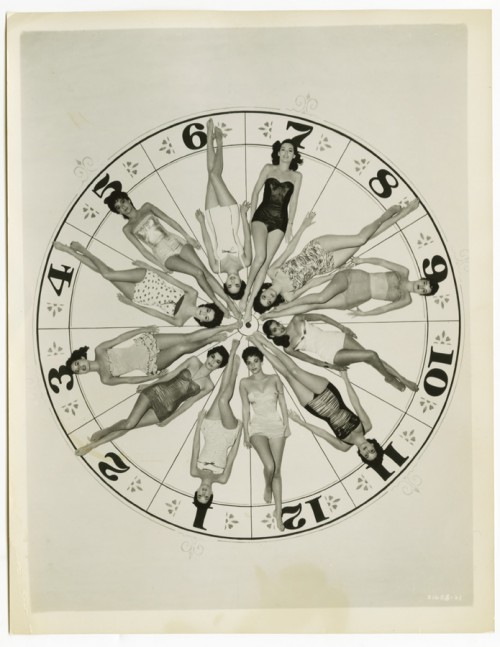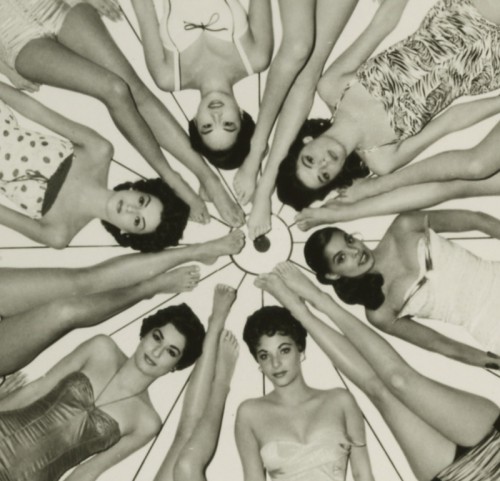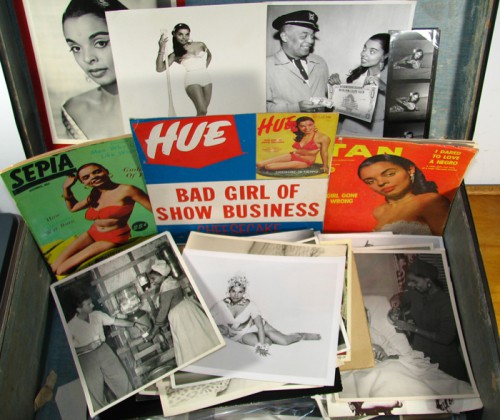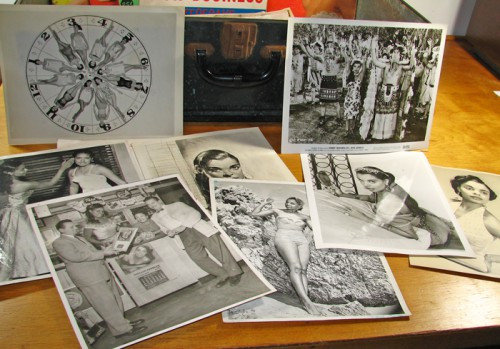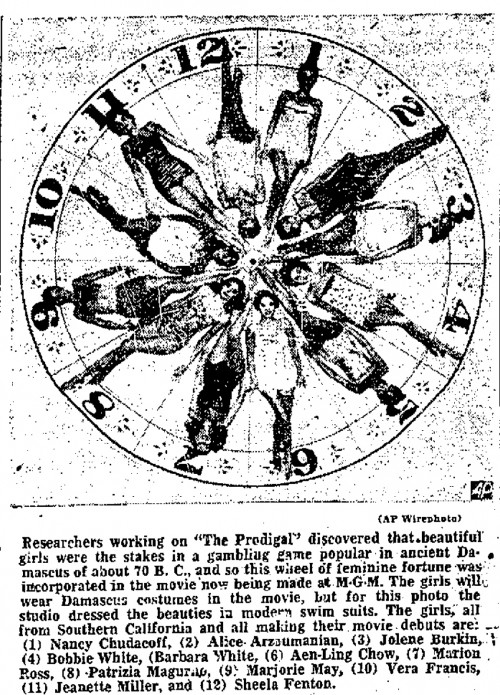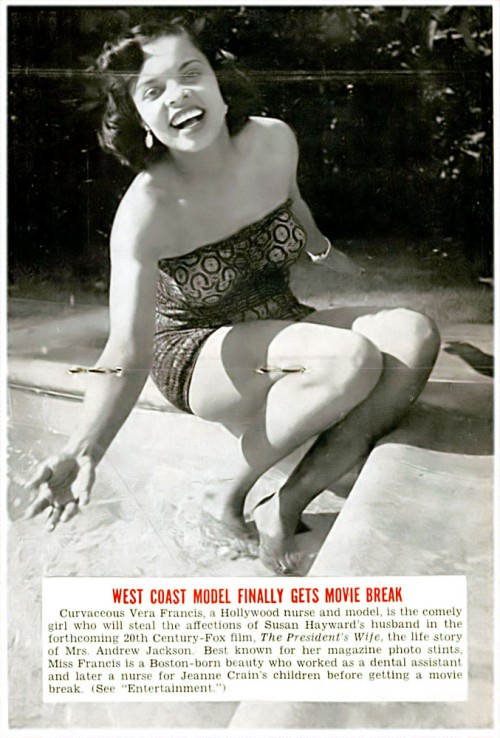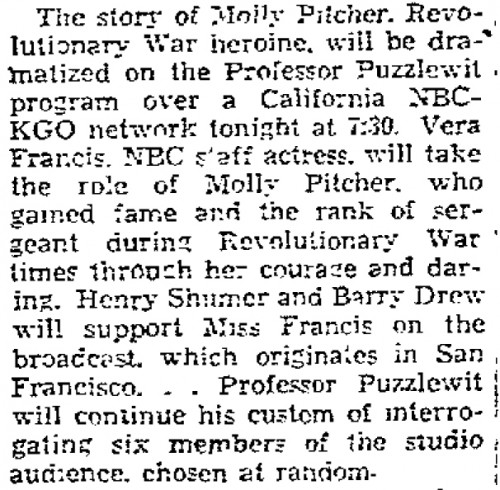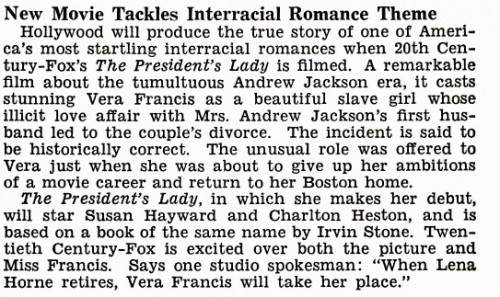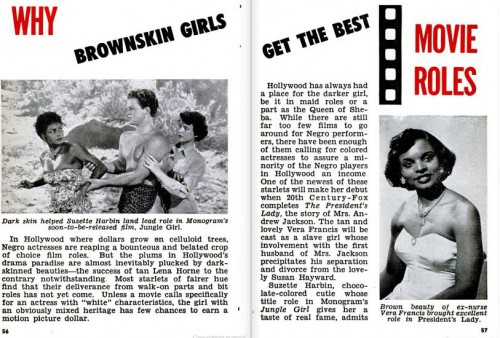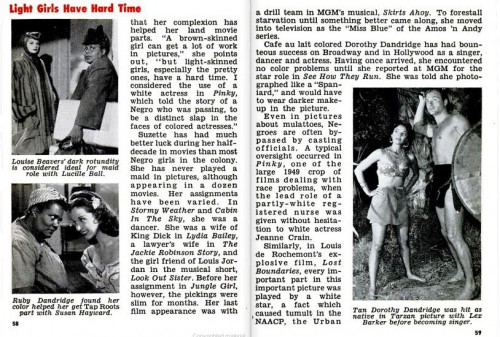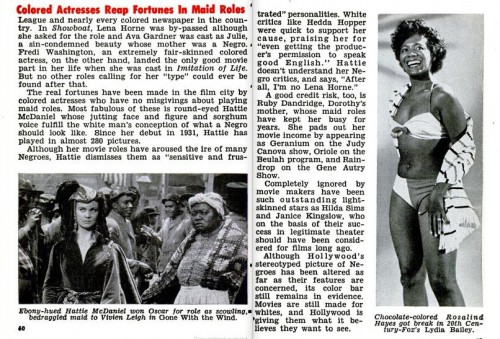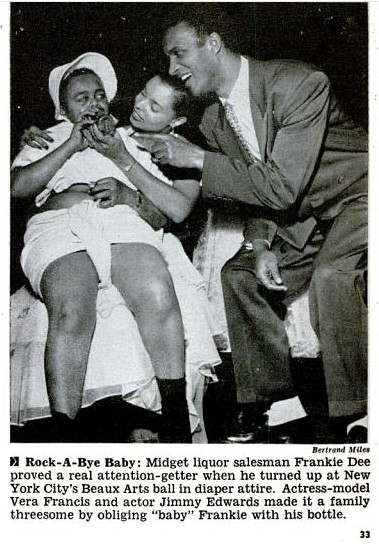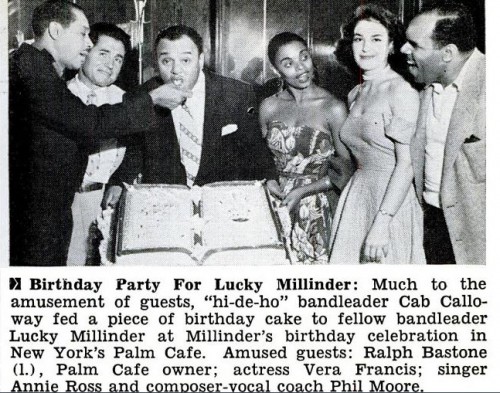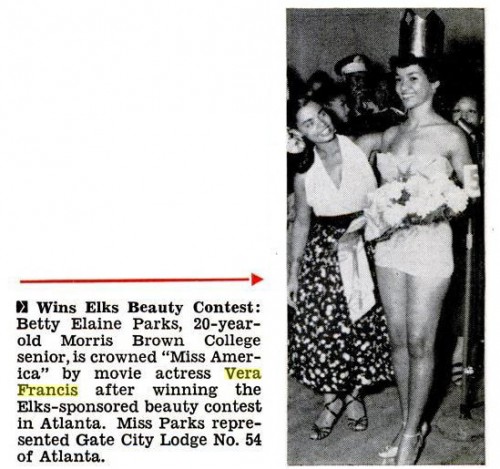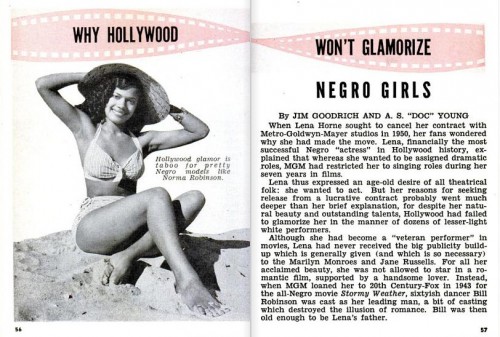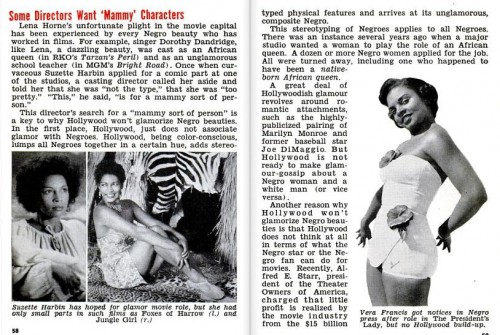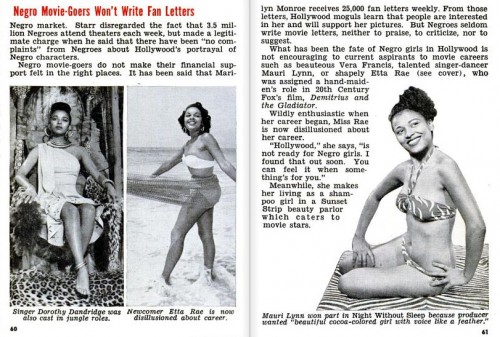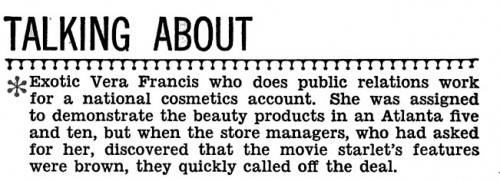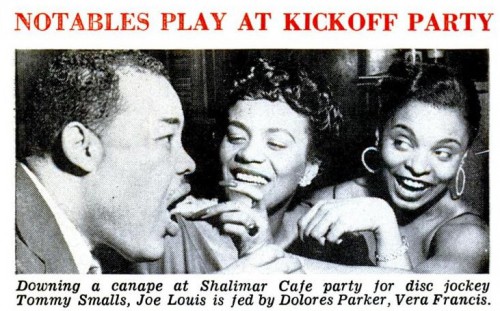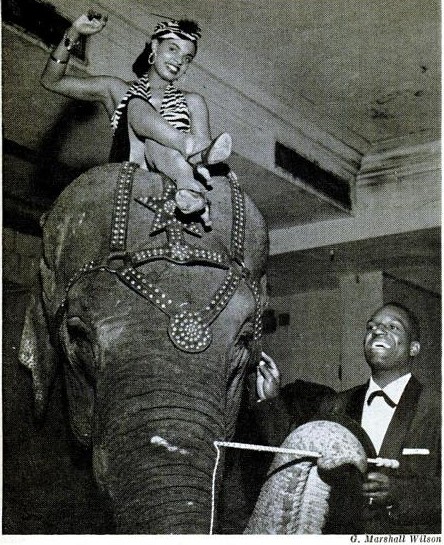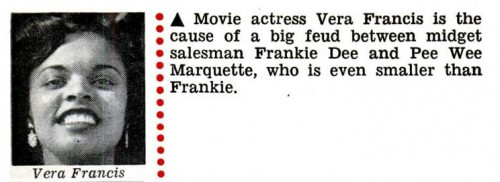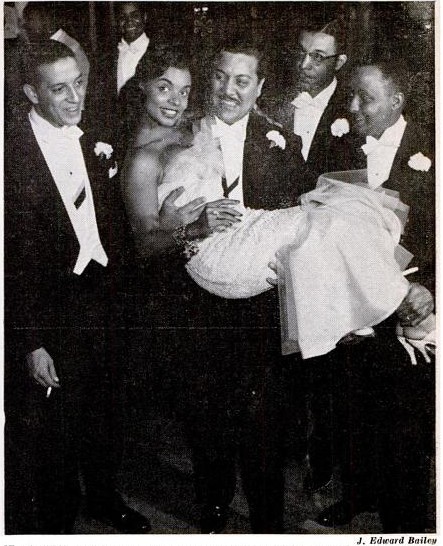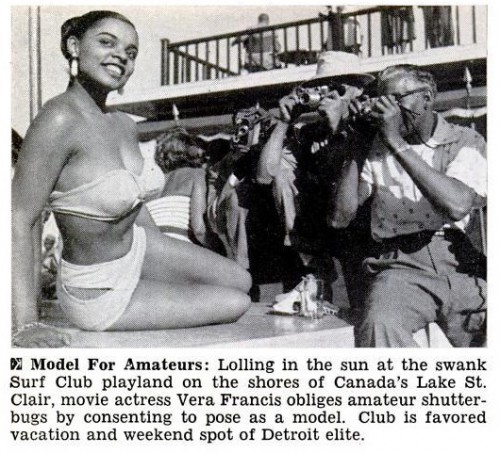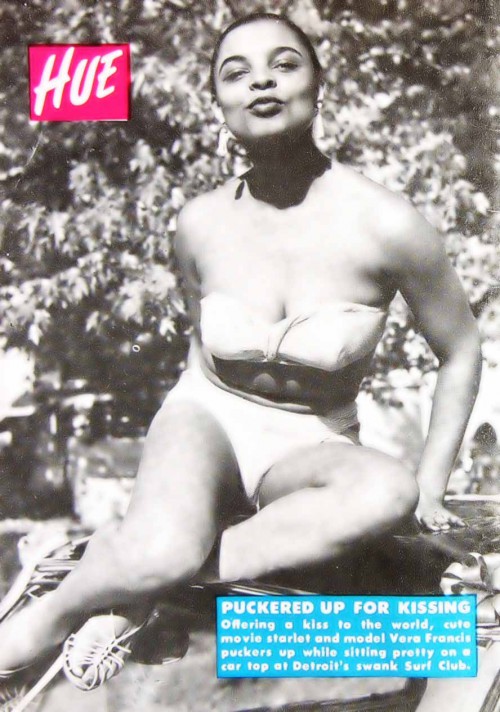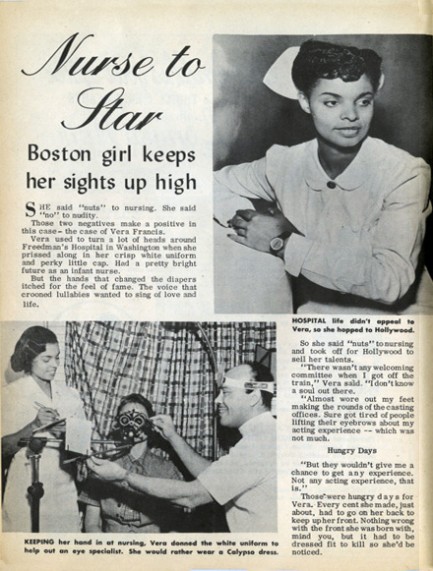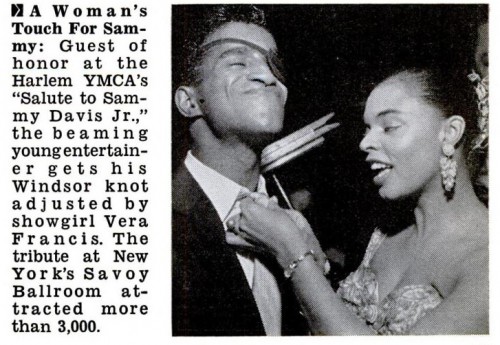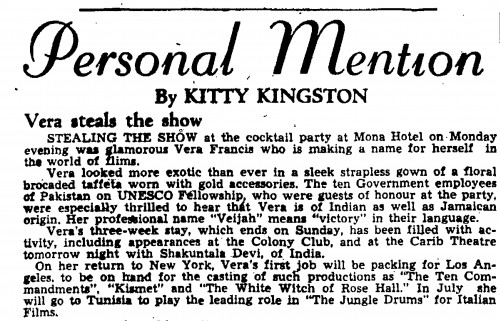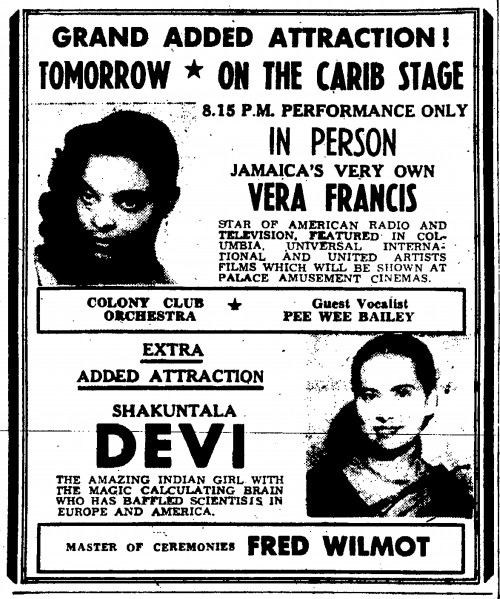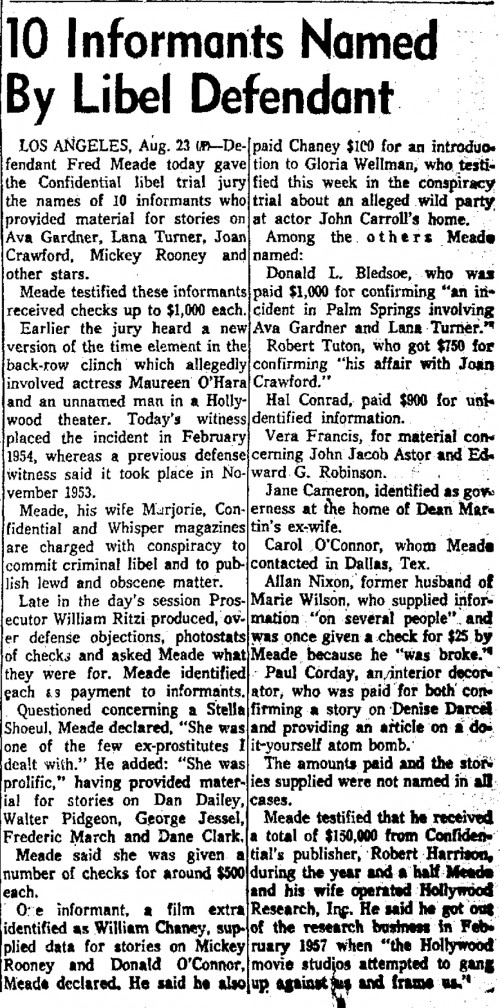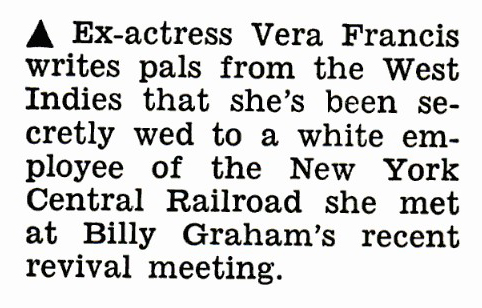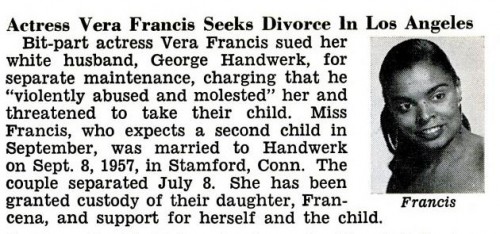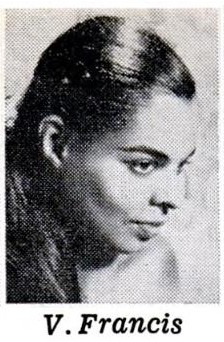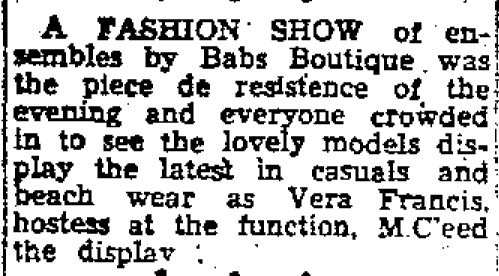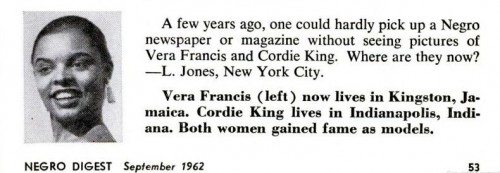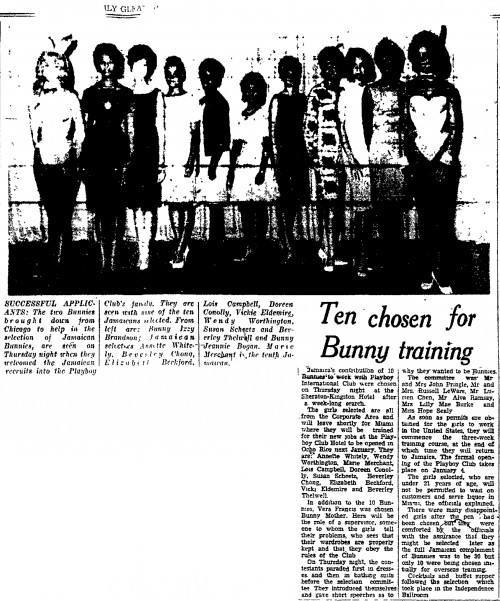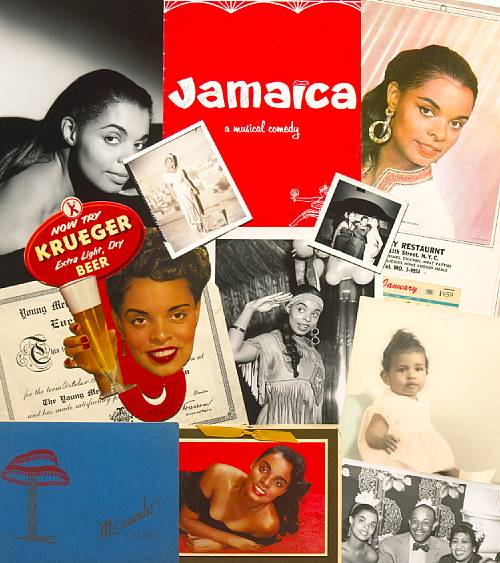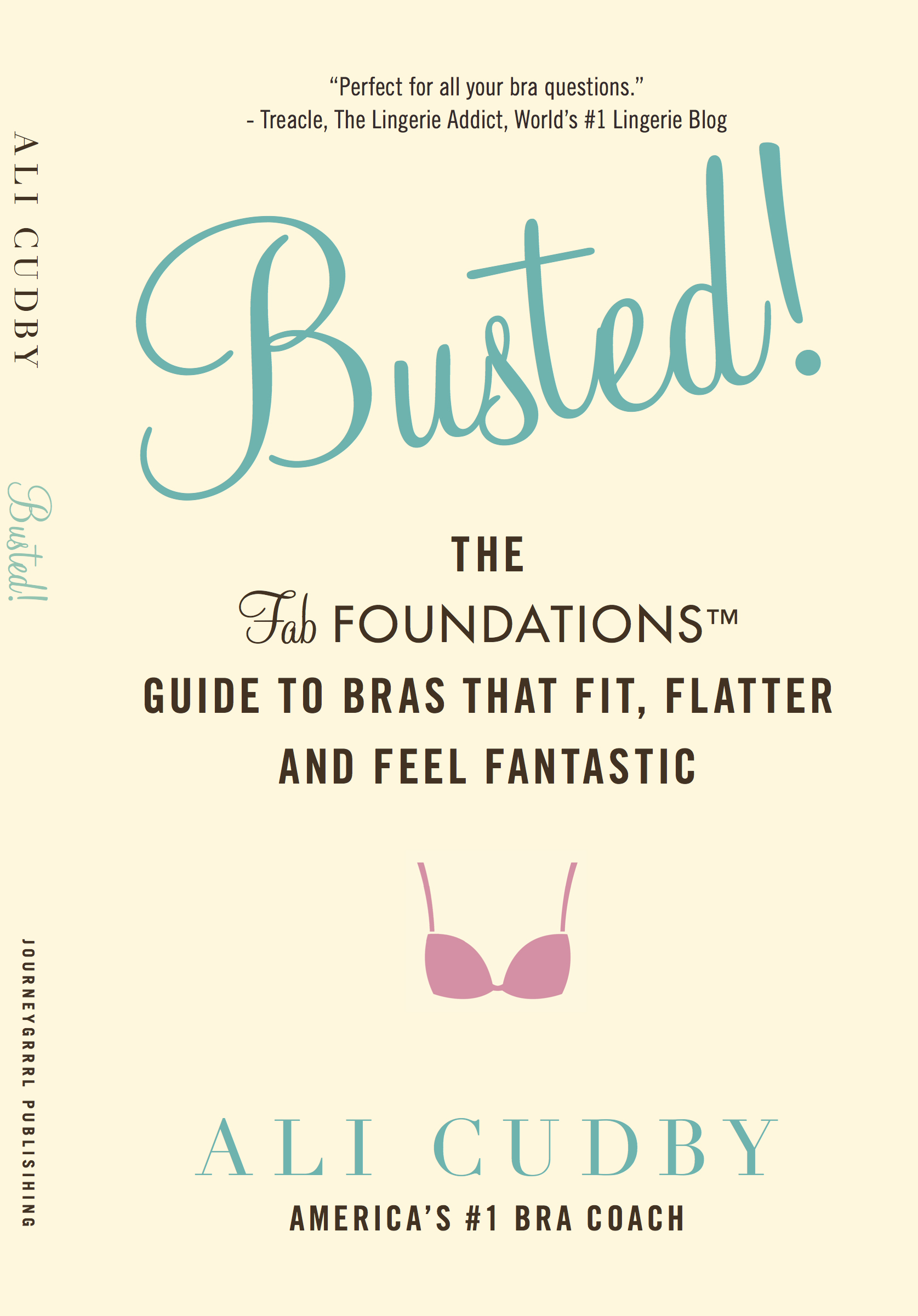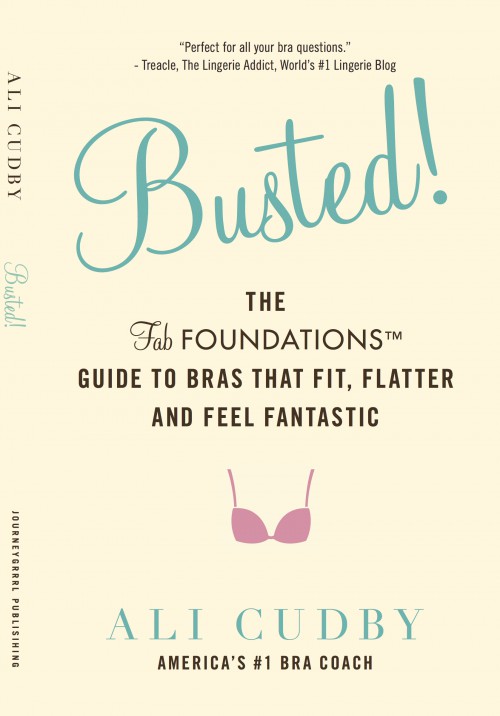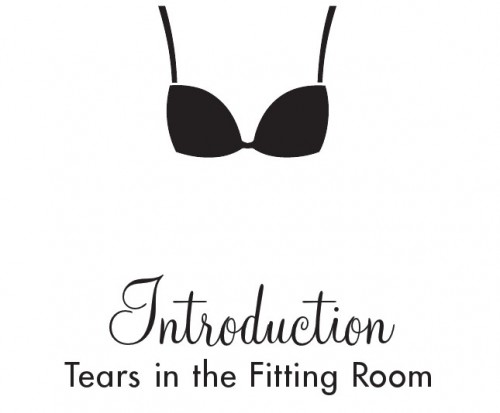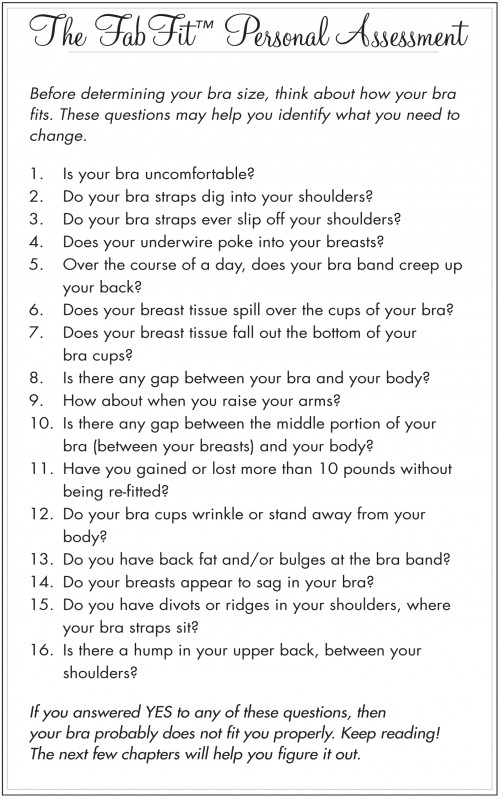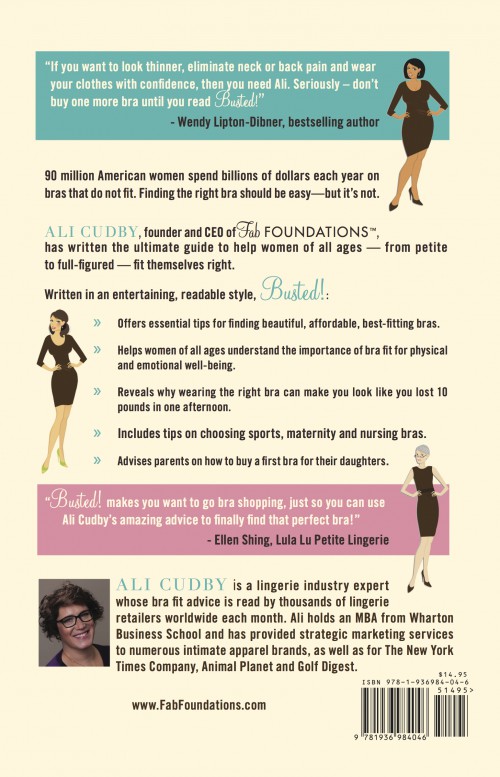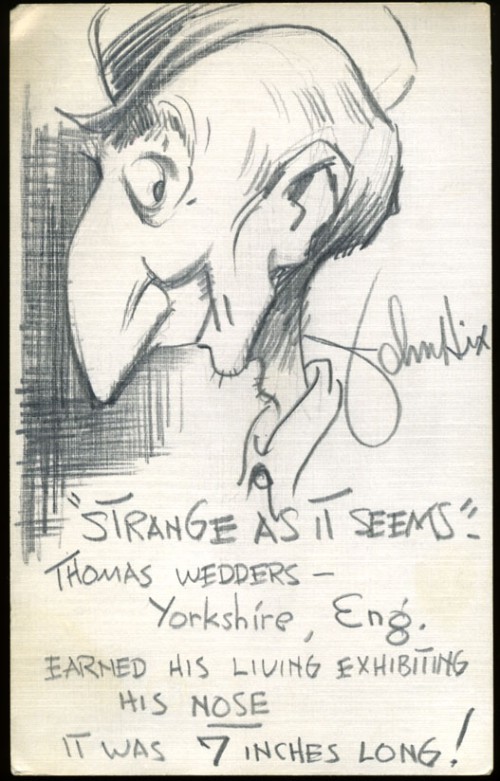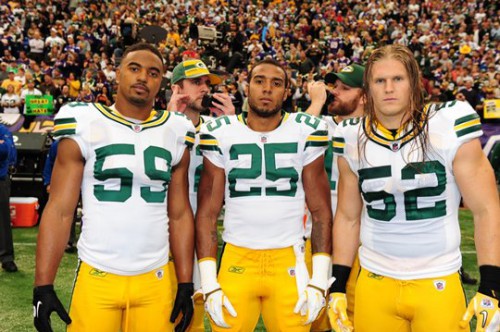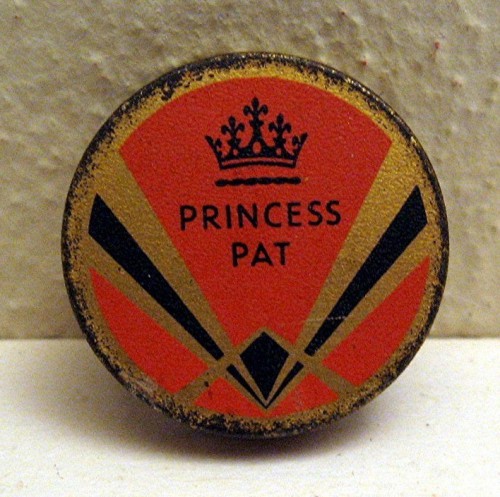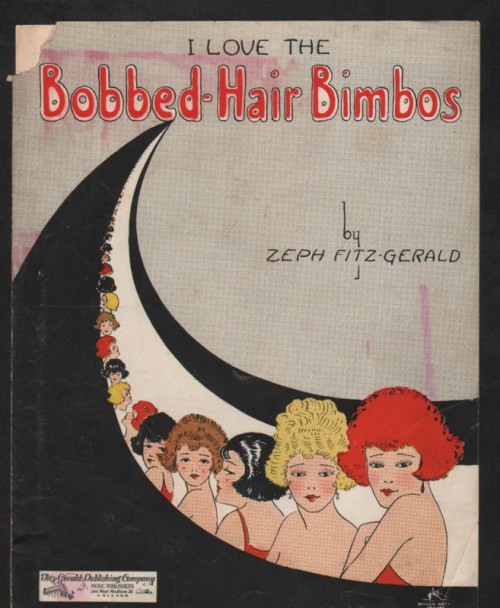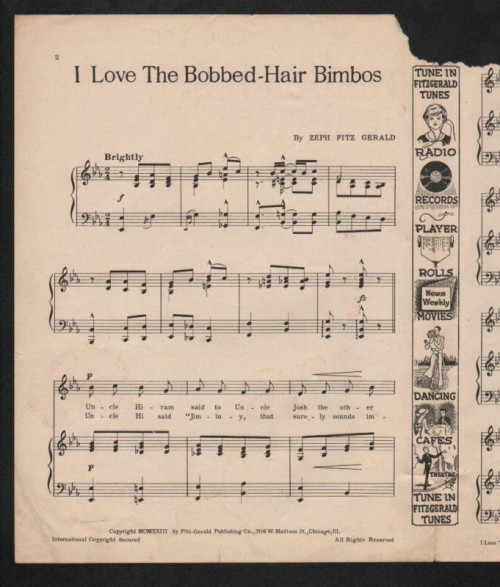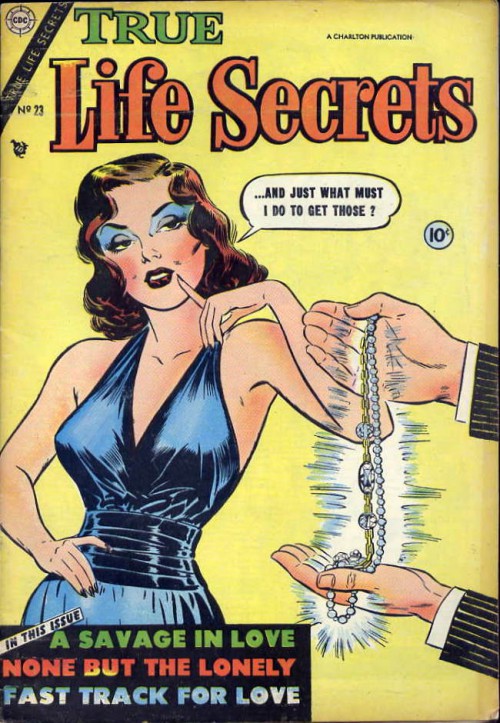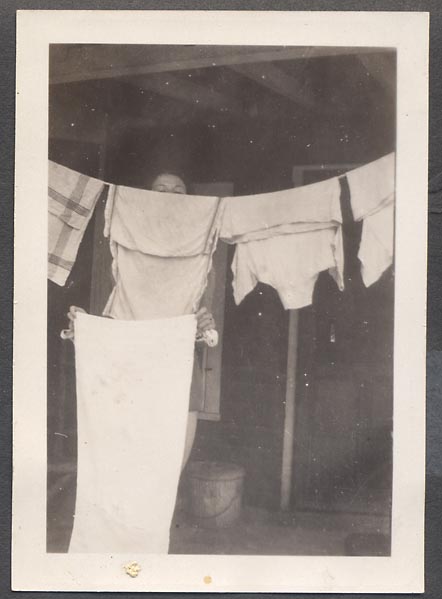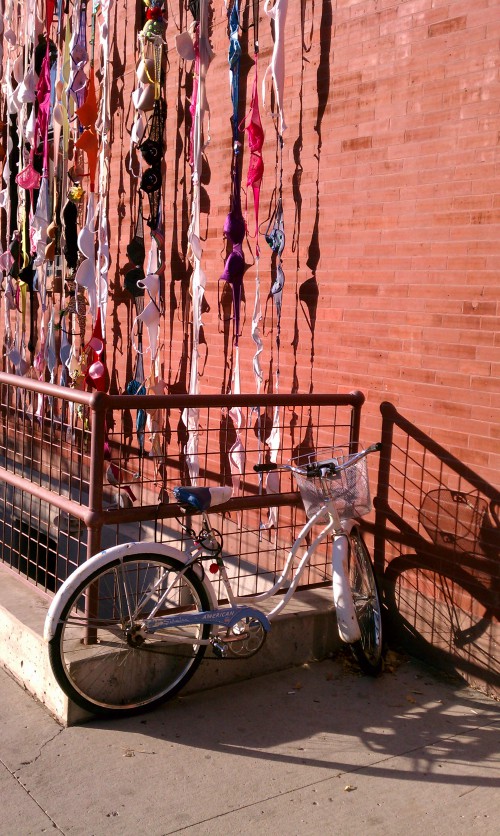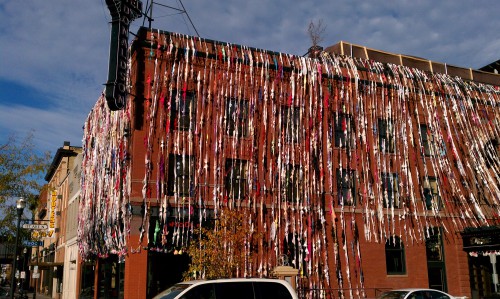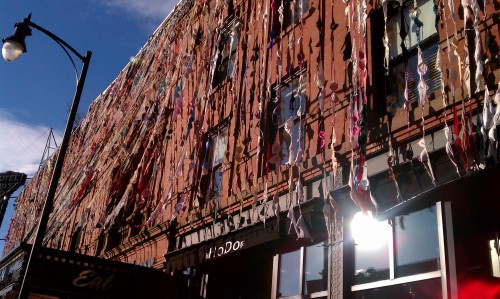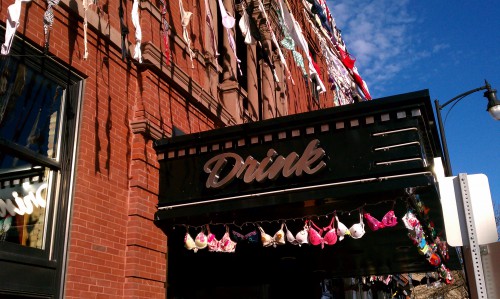Cute retro-styled cat keychains that double as protection. Because cats are pointy! Buy ’em here; via.
Author: Deanna
Jessica Savitch (Part One?)
I watched Almost Golden: The Jessica Savitch Story, starring Sela Ward, tonight. During commercial breaks, I Googled Jessica Savitch. To my surprise — and major disappointment — there’s not really any website devoted to this groundbreaking woman who earned four Emmys, an Alfred I. DuPont-Columbia University Award, and election to the board of trustees at Ithaca College.
http://youtu.be/hfwoELPJmC8
If you start at Wikipedia (and I never trust Wiki completely, so please only let it be a starting place), the entry on the anchorwoman pretty much follows the made for TV movie. The Accuracy Project has basic bio info, but leaves a lot to be desired as it really only presents corrections, and a handful of them at that. And there’s this bio by Abigail Griffith (Spring 2008).
Reading all of those, there are odd discrepancies which mainly center on Donald Rollie Payne, a gynecologist in Washington, DC, who was Savitch’s last husband who committed suicide on August 1, 1981 by hanging himself in the basement of their home. Abigail Griffith says that Payne “committed suicide after becoming aware of a diagnosis of incurable cancer,” while Wiki says he was a “closet homosexual.” I don’t suppose that matters much to most of us, but I’m certain these things mattered to Savitch and possibly say a lot about her (continued) relationship choices.
For something that fills in more gaps, you can try this archived article from People magazine on Savitch’s death.
And in 1988, five years after her death, a Current Affair episode in which Savitch’s family calls Gwenda Blair’s book lies:
http://youtu.be/8ZLVSPDe9_I
http://youtu.be/f3OJr_rRVbk
http://youtu.be/qaXQwdirVDo
(Worth watching for so many reasons — we can discuss in the comments!)
But for my money, the most insightful piece about Jessica I found online was this article written by Maury Z. Levy when Savitch was still a broadcaster in Philadelphia.
Since her death, Jessica Savitch’s been inducted into The Broadcast Pioneers of Philadelphia’s Hall of Fame, and the Park School of Communications at Ithaca College hosts a Journalism Lecture Series in her honor as well as named an on-campus television studio in her honor. There should be some sort of official website in her honor.
I bet Jessica would have loved the Internet, even if it/we would have had a field day of speculation and fun at her expense with the gaffes (largely exaggerated in the movie and historical footnotes) made on her last broadcast — just 20 days before her death. So someone, give her her due.
The Language Of Glove, 1879
Before there was today’s code for handkerchiefs, there were other fashion accessories used in courtship for communicating and flirting. There was the fan, of course, and, according to this article found in the Bismarck Tribune (March 15, 1879), gloves were used too.
The Glove Language
The English girls have improved upon the language opf the fan and the handkerchief by devising a very copious vocabulary of the gloves, which for the benefit of American women we beg to “pirate”from an English contemporary. It runs thus:
Drop a glove — Yes
Crumple a glove in the right hand — No.
Half unglove the left hand — Indifference.
Tap the left shoulder with the glove — Follow me.
Tap the chin with the glove — I love you no longer.
Turn the gloves inside out — I hate you.
Fold the gloves neatly — I should like to be with you.
Put on the left glove, leaving the thumb uncovered — Do you love me?
Drop both gloves — I love you.
Twirl the gloves round the fingers — Be careful: we are watched.
Slap the back of the hand with the gloves — I am vexed.
Take a glove in each hand and separate the hands — I am furious.
This also reminds me of the supposed code for rubber, gel or silicone bracelets; just because it was reported, it doesn’t make it true.
Signs Of The Times, 1945
A vintage photo, taken by photographer Joseph Jasgur, of Earl Carroll’s Vanities pin-up girls picketing in front of a Los Angeles movie theater — a staged publicity event “against” the film version of Steinbeck’s plantation story The Southerner. The signs say The Southerner is unfair to “the romancit South,” to the “Beauties of the South,” to the very”Flower of Dixie Womanhood.”
Still Dreaming Of The Burger King
I troll eBay; hey, it’s part of my job. So I was conflicted when I saw one of those kitschy BK pillowcases on eBay. I love Burger King — the food and the ads. But since hubby failed to get me a BK pillow when they were out, he’ll pay quite a bit more for it now… Which means I am less likely to get it.
Maybe we can meet in the middle with one of these old BK pillow dolls?
The Good, The Sad & The Ugly (A Link Round-Up)
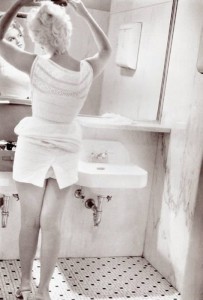
The Sad: The incredible photographer Eve Arnold has passed away.
The Ugly: Losing Ground on Women’s Rights: In 2011, Sex Ed, Contraception, Abortion Rights All Under Seige.
More Menstruation History: Unitex Sanitary Panties
A vintage pair of Unitex Sanitary Panties — brand new, unused, in the original box with all the instructions, etc.
The panties are made of sheer nylon with a rubber or vinyl-like pocket (likely the same material used to put over baby diapers) to insert your old fashioned sanitary napkin in.
The original tag says the panties must be worn “next to the body… Never over any other garment.” A-doi!
The seller says, “I bet there aren’t many of these left in existence.”
I bet not.
These Eyeglasses Look Upside Down – But They’re Not! (I Want!)
I found this Bert Stern photo of Kecia Nyman at Magdorable! — and fell in love with these glasses from 1965!
I’ve not been able to find anything like them, but I did find another scan of that Vogue issue (July 1965) which states the following:
More spectacles on the half-shell — with a switch that’s new to our eyes
…Worked out for the nearsighted, these clear the field of vision for all close work — reading, writing, gros- or petipoint — but provide quick accommodation for the distant objects that call for optical help.
They look upside down, but they’re not! And more than purely stylish, they solve problems; they’re like the reverse of the classic cheater readers.
I want — nay, I need a pair of these!
The article states that the frames are from the Fashion Eyewear Group of America. If you can help me find a pair, let me know!
Fashion Forecasting With Tarot Cards (In 1953)
A fashion spread in Harper’s Bazaar, August 1953, featuring over-sized tarot cards. Photos by Louise Dahl-Wolfe.
This Will Really Light The Smoker In Your Life Up
A vintage nudie butane lighter from the 60s. The nipples and crotch light-up when you flick — when you flick the mechanism for generating the flame on the lighter; not when you flick the crotch or nipples themselves. There may be contemporary versions available. But I like the idea of stroking the fires of a vintage broad.
Motto For 2012
Try It, You’ll Like It, as seen on this vintage “hippie” embroidered patch. Happy New Year, remember to be kind, recycle, read, collect, and care for one another. Look forwards, but remember, too, to look backwards to learn from history — but don’t try to live it. Today is for living. Try it, you’ll like it!
Really, Love From Peaches That Will Shake Your Tree
A signed vintage photo from Peaches, personally inscribed as follows:
To Charlie
“The kid with the puns”
Best of Luck always
your friend
“Peaches”
See? Women really do love a man with a sense of humor.
Whatjamacallit Wednesday: How Do You Get Kitten Hips? And Why Would You Want Them?
Kitten hips. No, not the furry kind — the “lithe young American” kind, as described in this vintage girdle ad published in Harper’s Bazaar, 1946.
You feel and look as if you’d just stepped out of a success course when you step into Carter’s “Mouldette.” The entire beautifully molded back is made with new synthetic elastic. Carter’s own Sweetheart panel flattens the tummy. Every seam’s a scheme to give you that lithe young American look.
You can find these ads on eBay.
Your Best Tool For SEO (Or, Why Search Engines Are Your Friends)
I believe search engine optimization (SEO) is best and primarily served via the content you write. If you believe that, you may stop reading; but if you aren’t convinced…
People seek entertainment and information the same way online as they do in the real world: by asking questions. The only real difference is that a lack of complete sentence structure and punctuation won’t get in your way online. *wink*
You and I may differ wildly in terms of our demographics, interests, and needs (for example, perhaps you are a 20-something male interested in the latest tech gadget while I’m a 40-something female who may be looking up some obscure silent film actress), but we each end up doing the same thing. We each find ourselves at some search box, be it at a search engine, sales marketplace, or favored site, typing in text and clicking to get the results. Those words we typed are the questions we have; on the Internet, these queries are called “keywords.”
What Google and other search engines, including internal search engines on individual websites, try to do is provide the best possible answers to our questions, the most relevant information that matches our query. Search engines are based on programs or algorithms which do their best to interpret what a searcher wants and, attempting to replicate human understanding, gives it to them based on the text or written content it can find.
In trying to take the search as question and help the person find the answer, Google et al employs not just what you say about your site (meta tags, descriptions, folksonomy, etc.), but what your site actually says. In other words, it ‘reads’ your site.
Every word in every post and page.
Including your links out to other sites (because if you’re not having conversations with others, you might just be a mad mumbling fool talking to himself).
To check how much of authority or credibility a possible answer has, search engines also look to see not only who links to that page or post — but for what. And just how do those links get there? By people who read your content!
Ah, the power of the written word.
But it doesn’t end there.
Back to you and I as question seekers on the Internet…
After we’ve posed our questions and received a list of possible answers, we evaluate the responses to our questions.
We each use our own individual criteria for trustworthiness, we have different ideas of what’s funny or entertaining, etc., but we each sort through the options or answers provided to us and make determinations about what we find. And what do we questioning searchers use to evaluate the possible answers? We read the content.
First, we read the brief snippet of content shown with the link, as grabbed by the search engine; if that passes the mustard, we click and go on to read more of that page or post. If that’s what we seek, we likely read the whole post or page — maybe even reading more pages at the site, clicking what’s recommended there, etc. If it’s still not the answer we are seeking, we go back to the list of possible answers or try phrasing our question differently and begin our search for the truth all over again.
This is why written content is so important; what you write is how you are found and how your site is evaluated.
Believe it or not, search engines are our friends and partners in our quests, so there’s no point in trying to “beat” Google or any search engine with SEO tactics.
What’s the point in trying to divert those seeking information on silent film stars over to a site dedicated to tech gadgets — or vice versa? Annoyance?
You can give yourself a little nudge with some basic use of technology to assist in SEO; but frankly, your time is best spent on creating unique content that will address the needs and interests of the question seekers.
What A Cheeky Little Monkey!
What an expression on showgirl Barbara Anne Sharma! Did someone squeeze the Sharma? This vintage photo was a promo piece for The Boy Friend. Taken by Maurice Seymour; autographed by Sharma herself.
Sunday’s Are For…
Razor blades? At least that’s what the “Sunday” charm on this Juicy Couture Days Of The Week Necklace looks like to me… Right down to the notched corners.
Oddly enough, the item description reads thus:
Juicy Couture’s days of the week necklace is designed to make each day a bit more glamorous. Get it to cure that case of the mundane Mondays.
Razor blades: The cure for Mundane Mondays.
Found in my Shop It To Me Sale Mail Alert; you can sign up for yours here. Normally there aren’t razor blades, but open it carefully. *wink*
Which Cat Is Your Wife?
A “fun little quiz” based on photographs of cats taken by Walter Chandoha — found in Every Woman’s magazine, October 1952. Which seems more than a little odd… Did “every woman” have a wife of their own in 1952?
Note that among the types, The Hypochondriac, The Indolent One, The Intellectual, etc., there is no The Sex Kitten. Too obvious, perhaps? So The Vamp, I guess, is the less obvious choice. Nor is there any The Purr-fect One.
No Newt Is Good Newt
I had these buttons / pinbacks made back in the day — the early days of the gross ineptitude, racism, and misogyny of the political money-grubbing beast that is Newt Gingrich. Sold quite a number of ’em too.
Who knew they’d come back into the necessity of fashion again in 2011?
Then again, we never did quite flush Rush, either.
Like those helium poops, they just keep rising to the surface. Ugh. And *sigh*
Thankfully I collect political items, so I just resurrect them as needed. However depressing that is. Since Newt is unfortunately back, up to his old crap and more anti gay rights than ever, I’m selling the No Newt buttons again.
I just can’t summon the energy to get up on my soapbox and effectively speak (though I am close to a tantrum!), so go read Newt Gingrich Is A Bigot. And then mosey on over to The Maddow Blog for info on Newt— which admittedly has a search fail, so you have to trust Google for help. At least look at Rachel’s interview with Newt’s sister, Candace Gingrich-Jones.
Spin The Wheel, Land On Vera Francis
Who wouldn’t fall in love with a vintage roulette wheel of pinups?
The seller (Grapefruit Moon Gallery), says this in the item’s description (links added by me):
ITEM: You are bidding on a very rare vintage pin up photograph of African American 1955 Hollywood sensation, and later boulevard of broken dreams archetype Vera Francis and a number of other showgirls as a proverbial roulette wheel where every spin is a winner. Measures 8″ x 10″
We are happy to be offering examples from the archives of Vera Francis, who was called a Hollywood Tragedy after being blacklisted from the screen for allegedly selling stories to the scandalous tabloid Confidential, about the inappropriate behavior of her often white co-stars and superiors. But the real tragedy of her career is that despite appearing in movies throughout the early 50s and being splashed upon magazine covers (Jet and Ebony notably) for her breakthrough role in “The President’s Lady” a story about the interracial affairs of American president Andrew Jackson, her name isn’t even featured in imdb for many of her known parts. The combination of her outspoken role in civil rights (Lena Horne was her oft mentioned hero), her “loose talk” and the scarcity of roles for black actresses in the 1950s meant that she disappeared quickly from the scene. However, she retained a lot of her allure in African American theater communities, performing in touring productions throughout the 1950s and 1960s and appearing in cabarets and as a model and pitch woman.
I was intrigued…
According to the San Mateo Times (September 30, 1954), the photo isn’t a true movie still, but promotional photo for MGM’s film, The Prodigal, sent out on the AP.
Researchers working on “The Prodigal” discovered that beautiful girls were the stakes in a gambling game popular in ancient Damascus of about 70 B.C., and so this wheel of feminine fortune was incorporated in the movie now being made at M-G-M. The girls will wear Damascus costumes in the movie, but for this photo the studio dressed the beauties in modern swim suits. The girls, all from Southern California and all making their movie debuts are: (1) Nancy Chudacoff, (2) Alice Arzaumanian, (3) Jolene Burkin, (4) Bobbie White, (Barbara White, (6) Aen-Ling Chow, (7) Marion Ross, (8) Patrizia Magurao, (9) Marjory May, (10) Vera Francis, (11) Jeanette Miller, and (12) Sheela Fenton.
But who was Vera Francis?
In the Encyclopedia of African American Business: Volume 2, K-Z, Vera is a single line entry, listed among the “pioneer models” which drove the development of the Barbara Watson Charm and Model School. In Style and Status: Selling Beauty to African American Women, 1920-1975, she’s merely a “Los Angeles model” quoted along with a few other models quelling the fears of middle-class magazine readers, of the non-white variety, that “the image of models as reckless party girls with loose morals was much exaggerated.” Vera’s comment was “I always keep a regular job, it’s one sure way of staying out of trouble.”
What were Vera’s “regular” jobs? According to the September 25, 1952 issue of Jet magazine, which contains a profile of the young starlet, “Curvaceous Vera Francis, a Hollywood nurse and model, is the comely girl who will steal the affections of Susan Hayward’s husband in the forthcoming 20th Century-Fox film, The President’s Wife the life story of Mrs. Andrew Jackson. Best known for her magazine photo stints, Miss Francis is a Boston-born beauty who worked as a dental assistant and later a nurse for Jeanne Crain‘s children before getting a movie break.”
But sadly, there’s not much more known about Vera — despite the fact that, at least since 1952, Vera Francis was a staple on the covers (and pages between) of Jet, Hue, Sepia and other magazines for persons of color.
So, you know me, I obsessively set about researching Vera Francis, trying to create a biography…
However, I can’t honestly call this a biography; it’s more of a Vera Francs timeline at this point as most of what little (too little) I found is centered on gossip and one-line bits of info. However, given that Vera was a starlet, one can’t entirely ignore the gossip; that’s the only way one really finds more photos. In the Jet pages especially, you’ll see that Vera’s “loose talk” was probably based on some pretty hot action — along with movie talk and other gigs, there was plenty of gossip to rival the starlet’s “staying out of trouble.” Clearly, Vera was out and about, making the scene, hoping to make it in Hollywood.
[If you take these images to post elsewhere, please credit me with a link — I spent more hours than you want to know researching, scanning, cropping, editing this!]
The Vera Francis Timeline
The Daily Gleaner, Jamaica, April 11, 1935, Vera and Beryl Berth were arrested by Detective Hutchinson on a charge of selling ganja.
The Daily Gleaner, June 1, 1935, Vera Francis was “fined five pounds or two months hard labor for a breach of the Dangerous Drugs Law, to wit, selling ganja.” (No mention of Beryl.)
The Daily Gleaner, July 27, 1936, Miss Vera Francis is mentioned in a recital and is listed as being from Boston, U.S.A.
Oakland Tribune, July 13, 1937, Vera was mentioned as an NBC staff actress to take on the roll of Molly Pitcher on the Professor Puzzlewit program.
Jet, September 25, 1952: Announcing Vera’s role in the interracial romance film The President’s Lady.
Jet, October 16, 1952: Featured in “Why Brownskin Girls Get The Best Movie Roles.”
Jet, September 25, 1952: In press about The President’s Lady, a studio spokesman says, “When Lena Horne retires, Vera Francis will take her place.”
Jet, February 19, 1953: Photo caption reads:
Rock-A-Bye Baby: Midget liquor salesman Frankie Dee proved a real attention-getter when he turned up at New York City’s Beaux Arts ball in diaper attire. Actress-model Vera Francis and actor Jimmy Edwards made it a family threesome by obliging “baby” Frankie with his bottle.
Jet, April 16, 1953: when returning to Hollywood, “received offers as high as $100 for her address book that contains names of New York’s bachelors.” (Foreshadowing of the Confidential scandal?)
Jet, August 27, 1953: A guest at a birthday party for Lucky Millinger — Millinder is fed cake by “hi-de-ho” bandleader Cab Calloway while Francis and others look on.
Jet, September 10, 1953: Vera Francis crowns Betty Elaine Parks “Miss America” in an Elks Beauty Contest in Atlanta.
Jet, Sepembert 17, 1953: The actress is featured in the article “Why Hollywood Won’t Glamorize Negro Girls.”
Jet, October 8, 1953: Talking About “Exotic Vera Francis who does public relations work for a national cosmetics account. She was assigned to demonstrate the beauty products in an Atlanta five and ten, but when the store managers, who had asked for her, discovered that the movie starlet’s features were brown, they quickly called off the deal.”
Jet, November 26, 1953: “Movie actress Vera Francis lost her job as assistant to disc jockey Jack Walker. He fired her for not having ‘humility’.”
Jet, May 6, 1954: At the Shalimar Cafe party for disc jockey Tommy Smalls “Joe Louis is fed by Delores Parker, Vera Francis.”
Jet, May 13, 1954: Caption for the photo reads Elephant Girl: Turning out for the spring arrival of Ringling Brothers, Barnum and Baily Circus in New York, film actress Vera Francis and comedian Nipsey Russell visit with a friendly elephant named Ruth. Vera climbed aboard but Russell played it safe on the ground.
Jet, April 22, 1954: The actress has “midgets” Frankie Dee and Pee Wee Marquette fighting over her.
Jet, June 17, 1954: Caption for the photo reads “Cotillion Capers: A guest at the Cotillion Club’s annual deb ball in Detriot’s Graystone Ballroom, movie star Vera Francis gets an affectionate lift by admiring club members. Curvacious Vera recently embarked on a new career as a calypso-style song and dance entertainer.”
Jet, June 24, 1954: Poses for amateur photographers.
Jet, July 22, 1954: Sheesh — “Mose Thompson, the Detroit financier, who invited movie starlet Vera Francis to town for a little light balling only to have her snatched from his fingertips by dapper cigar huckster Sterling Hogan.”
Jet, Augus 19, 1954: Vera Francis and Juanita Moore, signed to portray women inmates in Columbia’s Women’s Prison.
Hue, August, 1954: Vera Francis photographed at the Surf Club “Puckered Up for Kissing”.
Jet, September 2, 1954: Said to play role of a jungle girl in the next series of Tarzan pictures.
Jet, September 30, 1954: Said she signs for a feature role as one of 12 international beauties in MGM’s Biblical movie, The Prodigal to play a “maid of India.” (The roulette wheel that started all my obsessive hunting.)
Jet, December 2, 1954: “Now that she has had several minor roles in Hollywood films, shapely actress-model Vera Francis has changed her stage name to Vieja.”
Jet, December 16, 1954: A note that the “model-actress” to appear in Kiss Me Deadly (a Mickey Spillane feature) and Universal-International’s Tracey (starring Anne Baxter and Rock Hudson — near as I can tell, eventually titled One Desire).
Sepia, December 1954: Vera Francis on the cover and the subject of a feature story.
Jet, May 12, 1955: “Showgirl” Vera Francis adjusts Sammy Davis Jr.’s Windsor knot at the Harlem YMCA’s salute to Sammy.
The Gleaner, March 17, 1955: “Vera steals the show” in Kitty Kingston’s Personal Mention column. Vera is said here to be “of Indian as well as Jamaican origin” which “thrilled” party guests, especially “the ten Government employees of Pakistan on UNESCO Fellowship.” Here Vera’s new professional name, “Veijah” is mentioned and stated as meaning “victory.” The films Vera is to be gearing up for are listed as The Ten Commandments, Kismet, The White Witch of Rose Hall, and The Jungle Drums, to be filmed in Tunisia for Italian Films.
Also in that paper, an ad for Vera Francis appearing in person on the Carib Stage. (Note that Vera Francis is listed as “Jamaica’s Very Own” despite the paper saying in 1936 that she was from Boston.)
Jet, September 8, 1955: Francis “the movie bit player,” underwent a hernia operation at Cedars hospital, LA.
Jet, October 6, 1955: A note that Vera is rehearsing for a road company tour of the play Seven Year Itch. “She’ll wiggle her hips in the role that move actress Marilyn Monroe made famous.”
Lima News, August 24, 1957: In coverage of the Confidential libel scandal, Vera was named as paid informant regarding John Jacob Astor and Edward G. Robinson.
No details were offered. But, according to Shocking True Story: The Rise and Fall of Confidential, “America’s Most Scandalous Scandal Magazine”, “Vera Francis, a black actress, was paid for a story on her affair with socially prominent John Jacob Astor.” (I believe it was this John Jacob Astor — a family with enough scandal that whatever info Vera sold is a footnote too small for me to bother researching. At least right now.)
Jet, January 2 1958: Words fail, so I quote:
Ex-actress Vera Francis writes pals from the West Indies that she’s been secretly wed to a white employee of the New York Central Railroad she met at Billy Graham’s recent revival meeting.
Jet, May 15, 1958: “Former actress-model Vera Francis has turned “producer” in Jamaica, BWI. She presented her husband, George Handiwerk Jr., with a bouncing seven-pound, three-ounce daughter.”
The Gleaner, August 24, 1958: Mentions that Mrs. Vera Handwerk (the guest of Mr. and Mrs. Carby) is slated for the leading role in Calypso, to be filmed in Jamaica.
Jet, June 18, 1959: Vera “now Mrs. George Handwerk Jr. is four months again on her motherhood career, leaving behind in Kingston, Jamaica, her German husband to mind the first-born which she visits her sister.”
Jet, August 27, 1959: Vera Francis divorced “her white husband, George Handwerk,” married on September 8, 1957. They had a daughter, Francena, and Vera was pregnant with a second child.
Jet, January 14, 1960: “Pretty actress Vera (Francis) Handwerk gave birth to an eight-and-one-half pound girl, Janna, her second, in Jamaica, Britsh West Indies.” Here’s the photo that accompanied the news bit.
The Gleaner, November 26, 1961: Vera is listed as the hostess who also M.C’eed a fashion show at Babs Boutique.
But by September 1962, in Negro Digest (Black World), people were wondering where Vera Francis was.
The Gleaner, October 3, 1964: Vera is listed at the Bunny Mother for the Jamaican edition of the Playboy Bunnies.
Pontiac Daily Leader, February 12, 1969: She is mentioned as the “former Vera Francis” — now the Mrs. in Mr. and Mrs. Harlan Robertson. The couple, along with son Randy, were in Odell visiting Vera’s father, Perry Francis. No mention of the daughters.
Nowhere do I find any proof of Vera’s “outspoken role in civil rights”, though clearly she lived her life as a woman who resisted labels and limits — in terms of color and gender.
Additional image/info: In June of 2011, Bonhams auctioned off a lot of Vera Francis archives for $915.
Busted! As Good As “Our Bodies, Ourselves”
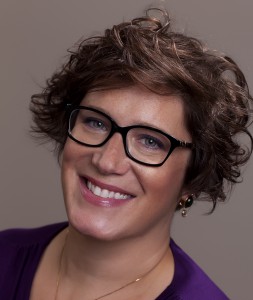
Continuing my talk with Ali Cudby, author of Busted! The FabFoundations Guide To Bras That Fit, Flatter and Feel Fantastic. (Enter to win a signed copy of the book here!)
As a researcher *, I disagree that corsets were as restrictive as the roles women had in society. Because women controlled how tight they laced, could remove stays, etc., there was far more control by the individual over her corset than her culture. Culture has been far more damaging, suffocating, than any corset.
There were actually significant health issues directly tied to corsetry, as well, particularly when the fashions dictated the smallest possible waist. Women did permanent damage to their lungs and even rearranged their internal organs to accommodate corsets! Plus, it was (in my oh-so humble opinion) a lovely turn of phrase…and I love a good turn of phrase. :)
In that sense, women today who are not wearing a properly fitting comfortable bra are doing far worse things to themselves and their bodies than corsets, really. We are imprisoned by the places and times we live in, yes, but our ignorance of our bodies, our bras, is some sort of self-inflicted madness at this point…
Agreed, especially as society is less rigid today and women have much more opportunity to make decisions for themselves about how to dress, especially underneath their clothes.
To that extent, I see your book as a companion piece to the iconic Our Bodies, Ourselves. How can we be the action figures we need to be in our lives without knowing this fundamental functional part of our lives? That question may be rhetorical… (Feel free to comment though!)
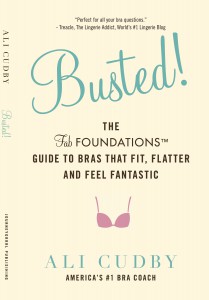
Naturally, I love the idea of being a companion piece to the seminal Our Bodies, Ourselves! When it comes to bras, specifically, the thing I love is how empowered women feel when they figure out how fit works on their bodies. It’s fantastic to help a woman feel better in her skin and move past the negative body image messages perpetrated by the media.
I’m glad you mentioned body image messages in the media… Fundamentally, we women think we know our breasts. But we really don’t. I think we more about how our breasts are “supposed” to appear, clothed or not, and we certainly have feelings about that… But we really don’t know our own breasts, do we? How does this compound the matter of fit?
I don’t think I’ve said that women don’t know their own breasts, but women certainly get mixed messages about the role of breasts in society.
No, you didn’t say that bit about women not knowing our own breasts; I did. *wink* It seems we don’t know as much as we should, or we wouldn’t suffer with bras that don’t fit!
If you’ve never been taught how a bra should fit, and you may not even be aware of brands that are designed for your specific body type, it’s like trying to hit a moving target with a blindfold on!
In Chapter Two, in Once Upon A Time, When Fit Was A Fairy Tale, you discuss the fairy tale of fit:
Bra fitting can be confusing because there are so many pieces to literally fit together, and it’s not something most American women are taught — not at home, in school, or anywhere else. There’s no real mechanism for that education. It’s not taught in high school health classes. Many mothers overlook the chance to help their daughters get fit correctly, perhaps because they never experienced the benefits of the right fit themselves.
So poor bra fit is literally passed down through the generations!
Historically, speaking, what’s to blame for this? How much of women’s ignorance to the issues of bra fit are our fault? How much do we, must we, hold others accountable for? How do we take back our breasts, our health, our lives? Is there anything we can do at the consumer level?
I think economics and the bottom-line thinking that has been so pervasive in America is the culprit. Customer service has left the building in a lot of areas of the department store (except the men’s suit department…hmmm).
The good news is that I see a swing of the pendulum in the opposite direction. There are an increasing number of fit-based boutiques out there. Right now, most of them cater to the high end of the market, but it could be a beginning of a movement. I’d like to think so, at least! The product is there, the message is getting out…so I’m optimistic about the direction this industry is going.
We’ve all heard (and quite possibly ignored) the percentages of women who are not wearing a properly fitting bra; what does this percentage mean in terms of number of women?
The numbers are staggering. Between 80-100 million American women spend several billion dollars each year on bras that don’t fit and cause them physical and emotional harm!
And that’s just women over the age of 18 — the youngest group of women are actually most likely to wear bras that don’t fit.
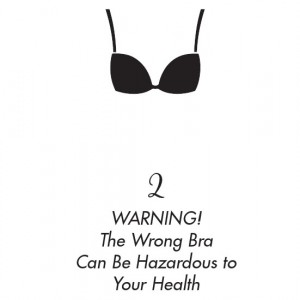
I know you’re not a doctor; and neither am I, but I’d guess this phenomenon of poor fitting bras and the increase of medications for depression, anxiety, aches and pains, lethargy, et al. is likely related. My readers might think I exaggerate — do you have any comments on the links between poor fitting bras and the things that ail us?
I know that women who have gotten fitted report that they no longer have daily headaches, shoulder aches and back pain. They stand taller and feel better — both physically and emotionally. I know that was true for me, and my experience is what led to me writing this book.
To say that proper bra fit can be life-changing may sound overblown to some, but I’ve seen it happen way too many times to question the phenomenon!
The reason I find your work, your book, so amazing is that women spend how many hours a day in their bras? I mean, even if we take them off the second we can, it’s a lot of hours to be miserable! Like that seminal feminist work, Busted! is based on the principal that we can be instruments of change — for ourselves, personally, and for society itself. In order to do that, we need to be educated. Did you have any idea when you began your work as a bra coach that you’d be writing such a book? Did the connections between bras and health, society, etc. surprise you?
First off, thanks! I really appreciate it. My work has evolved very organically. It started with my own moment of realization, when I found pretty bras that fit and were comfortable. I started talking to my friends about my discoveries and began helping them. Then friends started bringing friends, and the seeds of my fit methodology began to gel, and I started talking to industry experts and blogging about my experiences. The more I learned, the more I realized how pervasive this issue is, both from a comfort standpoint and also that connection to self-image so many women face.
Bra coaching goes way beyond bras — it goes to the core of how we carry ourselves as women. I didn’t expect that, and every time I hear back from someone who has benefitted from my fit methodology, it’s incredibly fulfilling. Helping women feel better about themselves is rewarding on so many levels.
Is this an American problem; are things better in the UK or elsewhere?
Culturally, women from the European countries seem to value buying fewer items of better quality more than in the US. And in the UK there is a wider array of product available in more places, it’s just easier to find stores that carry a variety of sizes. But availability of product doesn’t necessarily translate into excellence of fit. Fit is a challenge worldwide, simply because there are so few standards for sizing within the industry.
I would love to see American women placing more value on finding a quality garment that fits, versus going for the least expensive, or only buying on promotion.
Since you work with bra designers and other in the manufacturing industry I have to ask, how much of the problems regarding limited bra sizes begin there? Or is it the retailers who are the biggest problem?
I think there’s a ton of great product out there in a huge range of sizes – like I’ve said, 28AAA through 56N. The challenge is finding what works for you.
There are real issues for retailers when it comes to stocking that wide range of products, the amount of inventory required is mind-boggling. So (as with most things in life) it’s more complicated than it seems and I honestly believe that most manufacturers and retailers want their customers to be thrilled with their purchases.
Rather than focus on the inherent problems, I see a great opportunity for women — own the solution by understanding fit on your own body and finding the products that work for you, either in local stores or online. It’s very empowering!
Now go forth, ladies, empower yourselves with Busted!
Further reading: Another interview with Ali Cudby at A Slip Of A Girl.
* In fairness to Ali, and for clarification for you readers, I should note the following. Ali and I had a bit more of a discussion about corsets and history. She is operating off the more generally accepted wisdom about corsets, yet when I proffered her my research (What If Everything You Knew About The Corset Was Wrong?, Corsets Are Too Sexy?, Corsets Bound To Stay Suffrage), she not only read the posts but called them “fascinating!” We happily agreed to the following: Corsets, while restrictive, may not have been AS restrictive as women’s roles in society. That is probably more than a humble research obsessed feminist historical blogger can really ask for.
Of Research & Tinkle Troubles
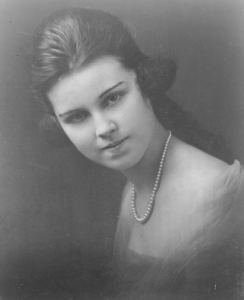
Thanks to Twitter and my friend Cliff Aliperti of Immortal Ephemera (and occasionally blogging with me at Inherited Values — nudge, nudge, Cliff lol), I was alerted to a fabulous post by author Michael G. Ankerich (I now want every single one of his books!). Ankerich’s post is right up my alley — right down to the word “tinkle” lol
Olive Borden: The Sybil Tinkle Connection includes everything I love…
Beautiful female silent film stars, the joy and anguish of impeccable obsessive research, a case of mistaken (or misleading) identity which is only partially solved… For now.
Ankerich may have proved that Olive Borden was not Sybil Tinkle (despite the perpetuation of the story long after it was corrected), but so many questions remain…
Why does mythinformation continue to spread? What is it about this legend that keeps it going? Why the mix-up in the first place? Accident or on purpose?
And, most importantly, whatever happened to Sybil Tinkle?
I want to know because I’ve fallen in love with her.
Young Sybil was said to be the first girl in Timpson, Texas, to smoke and “often painted outdoors, clad only in lingerie.” After a disastrous marriage in the early 1920s, Sybil ran away to California where she attempted to break into the movies. “Once in Hollywood, she wrote notes and sent portraits but, after a while, the family lost touch with her–forever!” (I say, has anyone ever looked at her husband?!)
From there, the Tinkle trail runs dry. A tasteless pun, perhaps; but it also captures the essence of things for me… Researching through old newspapers and other ephemera is rather like CSI work: you can only work off of the evidence left behind and, as time passes, it’s much harder.
Kudos to you, Mr. Ankerich, for the work you’ve done, for the women you’ve introduced me to — and for leaving just enough of a mystery for me to become obsessed with.
No More Crying In The Bra Fitting Room!
Few things excite me this much. Few contemporary things, that is. But I’m all giddy about a book that’s just been released: Busted! The FabFoundations Guide To Bras That Fit, Flatter and Feel Fantastic by Ali Cudby.
Ali Cudby is American’s #1 Bra Coach, the founder of Fab Foundations™ — and one hell of a great woman with a mission I adore. I was introduced to her by my friend and lingerie blogger, A Slip Of A Girl — who is, by the way, currently running a contest where you can win one of five copies of the book signed by the author. Go ahead; go enter the contest now. I’ll wait.
When Slip told me there was a book which could actually assist me in finding a bra — or even several bras! — which would fit while looking good and feeling super, I was skeptical. It seemed like the cosmetic ad promises: hope in a jar; hope between the covers. But quickly I found that Cudby’s book was more than hope and promises — it was a plan that works!
It was then that I became smitten with Ali Cudby, starting a dialog which was so long and insightful, that I’m breaking up the interview into two parts. We begin with the personal…
Ali, your story, like mine, begins with the problems of big busted women — but that’s not the only women who have difficulty. Were you surprised — horrified? — that smaller-busted women also suffered from the insanity?
In the very beginning, I started with the idea of covering only full-busted women in the book – it never occurred to me that petite women had similar issues. I was shocked when I started hearing the stories from smaller-busted women. We all deserve to feel beautiful, and when you’re told to shop in the children’s department, or told you don’t even need a bra, it makes petite women feel like they don’t even count among the ranks of women. That’s a huge barrier to feeling feminine, so it makes sense that this book is for everybody…and every body!
There are 16 questions in the Personal Assessment at the end of Chapter One — I’m too embarrassed to admit how many of them I had the positive-sounding, but negative-in-reality, response of “Yes.” (In fact, I found myself starting with an emotional “Yes! She gets me — this must be common!” but after so many, my ego deflated…) How many of the 16 problem symptoms do you think the average woman has?
Great question! The intent of the Personal Assessment is certainly not to make your ego deflate — sorry! — but hopefully to help you realize that all of these issues will be addressed in the book. They are common!
I would say that the majority of women I fit (if they’re being honest) would be answering “yes” to at least 10 of the 16 questions, and oftentimes more like 13-14. The idea of the Personal Assessment in the beginning is to make it clear that there’s an issue (guess I did that!) and have the book guide you through turning all of those issues around by the final FabFit Assessment at the end of the book.
Obviously, the best way for a woman to get a bra that really fits, is to go into a store and try them on. But what about the times where literally, you cannot find a store with bras larger than 38DD — and those are, in fact, too small? (Yes, this is personal experience! Every clerk I asked about the possibility of bras in larger sizes, of hidden stock consisting of the less-flattering-on-display bra sizes, was shocked — as if I belonged in a circus!)
Are we really forced to order a bunch of guessed sizes in several bra styles and brands, have them shipped to us? I mean even if these places have easy return/exchange policies, this wreaks havoc with a lady’s finances! How do we at least narrow down such a big search so that we have less up front (so to speak!) investment in bras?
Hearing your story makes my blood boil! Too many women are made to feel like THEY are the problem and it’s absolutely NOT TRUE! The good news is that there are great (and gorgeous) bras out there, in a variety of price points and in sizes that range from 28AAA all the way to 56N!
In the book, I go through specific steps to help make Internet shopping work for you. That should cut down on both the confusion and the outlay of cash.
I also have a secret website only for people who buy the book, and not only is there great information on the site, but there are exclusive coupons as well. And I’m in conversation for contests and other goodies for the page. Heck, the book practically pays for itself! :)
In your book, you talk about the prices of bras. While you are clear to say that you don’t have to buy the most expensive bras, there is some truth in getting what you pay for as well… What’s a respectable, reasonable, price to pay for a decent bra? What’s the average lifespan of any bra? A properly fitting bra?
I think there’s a balancing act when it comes to price. Some of the most expensive bras out there are pieces of art, but not designed with fit in mind. Then there are very expensive bras that are absolutely amazing for fit, and are made from the finest materials, have incredible hand-stitched embroidery, lace, etc. You absolutely get what you pay for! But do you need to spend that kind of coin to get a bra that will fit properly? No, you don’t.
You are asking a bra to do a job, and for some of us, it’s a big job. You want a quality bra that will last without stretching out or falling apart.
Unfortunately, you can’t depend on price as a good indicator of quality, and that’s why I break down the quality indicators of a bra in the book — from construction to embellishments — to help you get the most bang for your buck.
How you take care of your bras will also have a HUGE impact on how long they last. There are a lot of numbers thrown around the industry for the lifespan of a bra, but I say it should last around 6 months of wearings, or until it’s no longer doing the job of supporting your bust.
[Breaking down the price of “expensive” to the ridiculous… Ladies, if you buy a $70 bra, that’s like $11 a month. If you even wear that bra 10 times, that’s just over a dollar a day. Remember those old “less than the cost of a cup of coffee” commercials, designed to make you weak with the need to help a stranger? Why aren’t you moved to help yourself first? Tsk Tsk Tsk Charity begins at home! In this economy, can you afford to waste money on disposable cheap bras each month?]
Aside from the obvious changes in our bodies, such as weight changes, pregnancy, etc., how often should a woman go through the bra assessment? What are the average number of times a woman’s body changes enough to warrant a bra check?
You should reassess your fit every six months, plus any time your body undergoes a weight fluctuation of 5 or more pounds. Let’s say you get this book when you’re 20. If you use the information you learn to buy bras, you’re looking at 50+ years of bra purchasing. That’s around 100 times that you need to reassess your fit. And you need more than one bra, so figure you have at least 3-5 bras at any one time (the barest of minimums, including sports bras.) That’s a lot of bras over a lifetime! I think every woman deserves to look and feel amazing, and shouldn’t waste money on bras that don’t work for her body. (How many ill-fitting bras are collecting dust in your lingerie drawer?)
You know the old adage that you give someone fish and they eat for a day, or you teach someone to fish and they eat for a lifetime? Well, this book is all about teaching women to fish, so to speak. :) That’s why I call myself a bra coach – because I want all women to learn how to understand fit for their unique bodies, for the rest of their lives.
[That means, ladies, that Busted! is a book that pays for itself — and quickly. That’s even before you get to the secret goodies stashed on Ali’s site. Get this book before you even get the aforementioned quality bra and that bra will fit!]
This interview is “To Be Continued” — meanwhile, get yourself a copy of the book. Order it; enter to win it. Then come back tomorrow for the rest!
Hey Girl
Hey girl. Could you give me a recommendation for a good book — preferably something by a contemporary female author who deserves more recognition than she is getting because of misogyny in the mainstream publishing review worlds?
My sis-in-law alerted me to this site, Hey girl. I like the library too., by “Ryan Gosling, library and librarian lover.” Not sure how long it’ll last, but I’m diggin’ it now.
He Earned His Living Exhibiting His Nose
“Strange As It Seems” Thomas Wedders – Yorkshire, Wng. Earned His Living Exhibiting His Nose It was 7 Inches Long!
Well, you know what they say about men with large noses… So his nose was the only thing he could shows at the time. *wink*
Vintage comic drawing by John Hix, who created syndicated comic art oddity drawings similar to Ripley’s believe it or Not under the name “Strange as it Seems.” Via Grapefruit Moon Gallery.
See also: Wedders at Riplye’s.
Sharing The Green Bay Packers
If you’ve been watching Packer games this season (12 and 0, baby!), then you heard the rumor… It’s true! The Green Bay Packers Will Start Selling Stock Tuesday! Cost: $250 each share. Further deals available at Packers.com.
Meanwhile, whether you’re awaiting the sale in the morning or just can’t afford shares, enjoy Aaron Rodgers Photobombs! …Ummm Clay Matthews. Momma needs a moment…
Princess Pat
I just love everything about vintage Princess Pat powder — from the logo and colors to the name that, once in your brain, of speaking aloud you simply cannot refrain.
Image via.
Cheap Thrills Thursday: I Love The Bobbed-Hair Bimbos
An Offer She Shouldn’t Refuse
The infamous “Hooker” cover of True Life Secrets #23 (1954), in which a woman responds to a man proffering jewels by saying, “…And just what I must I do to get those?”
I haven’t read the comic, but in my mind he’s merely trying to get her to remove all that horrid “Milwaukee Blue” eyeshadow.
Laundry On The Line
Remember Wilson, the neighbor whose face we never completely saw as it as obscured by the fence on Tool Time? Yeah, so does the seller of this vintage photo — because they titled the auction “Unusual Vintage Photo View Mrs Wilson doing Laundry blocking her Face“. So unexpectedly delightful, I nearly snorted Diet Coke out of my nose. Which would only make more laundry for me.
Bike. Rack.
I’ve been so busy, I almost forgot to post this!
Photos taken of the HoDo, covered in bras, for the 3rd Annual Bras on Broadway, downtown Fargo.
